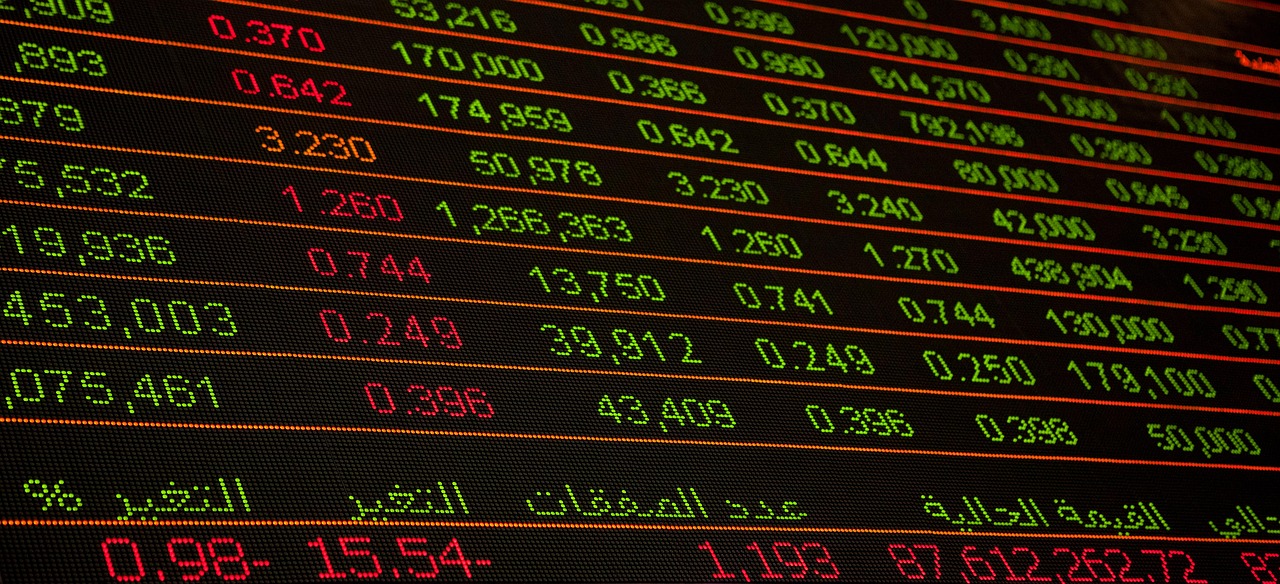Strategies for Trading Based on Seasonal Trends
Trading in the financial markets can often feel like navigating a vast ocean of uncertainty. However, one way to chart a course towards success is by leveraging seasonal trends. These trends are like the tides that can either lift your boat or leave you stranded. By understanding and applying seasonal strategies, traders can tap into predictable patterns that emerge at specific times of the year, enhancing their chances of making profitable trades.
To successfully implement seasonal trading strategies, it’s essential to first grasp what seasonal trends are. Think of them as recurring themes in the market that can be influenced by various factors, such as consumer behavior, agricultural cycles, and even weather conditions. For example, many retailers see a surge in sales during the holiday season. By recognizing these patterns, traders can position themselves advantageously, allowing them to ride the wave of market movements rather than getting caught in the undertow.
So, how do traders capitalize on these seasonal trends? It starts with thorough research and analysis. Traders should dive into historical data to uncover how certain assets have performed during specific seasons. This analysis can reveal important insights, such as which months typically yield higher returns or which periods are fraught with volatility. By studying these patterns, traders can better anticipate future price movements, allowing them to make informed decisions about when to enter or exit trades.
Moreover, traders can utilize various tools for data analysis. Charting software and statistical analysis programs are invaluable resources that can help visualize seasonal trends. For instance, a trader might use a charting tool to plot historical prices of a commodity over the past five years, identifying peaks and troughs that align with seasonal cycles. This visual representation can serve as a roadmap, guiding traders in their decision-making process.
In addition to analyzing historical data, understanding seasonal indicators is crucial. Price fluctuations and changes in trading volume can signal shifts in market behavior. For example, if a stock typically sees increased trading volume in the spring due to seasonal demand, a trader might consider this information when planning their trades. By refining their strategies based on these indicators, traders can improve their timing and increase their profitability.
Incorporating seasonal strategies into a trading plan is not just about recognizing patterns; it also involves aligning these strategies with individual trading goals and market conditions. A well-thought-out trading plan that includes seasonal strategies can enhance profitability and minimize risk. This approach requires a balance of discipline and flexibility, allowing traders to adapt to changing market dynamics while staying true to their overarching goals.
However, with opportunity comes risk. Effective risk management is paramount when trading based on seasonal trends. Traders must implement strategies to safeguard their investments, especially during periods of volatility. This might include setting stop-loss orders or diversifying their portfolios across different asset classes. By doing so, traders can protect themselves against unexpected market shifts that could jeopardize their positions.
One effective strategy for managing risk is diversifying seasonal trades. By spreading investments across various asset classes, traders can reduce their exposure to any single market. For example, a trader might invest in agricultural commodities during the planting season while also taking positions in retail stocks leading up to the holiday shopping rush. This diversification allows traders to capitalize on multiple seasonal opportunities while mitigating the risk associated with any one market.
Finally, setting realistic goals is essential for maintaining focus and discipline in seasonal trading. Traders should establish clear objectives based on their historical performance and market analysis. This not only helps in tracking progress but also serves as a motivational tool, keeping traders grounded and preventing impulsive decisions driven by short-term market fluctuations.
- What are seasonal trends in trading? Seasonal trends refer to predictable patterns in market behavior that occur at specific times of the year, influenced by various factors like consumer behavior and agricultural cycles.
- How can I identify seasonal trends? By analyzing historical data and using charting tools, traders can identify patterns in price movements and trading volumes that recur during specific seasons.
- What tools can help with seasonal trading? Charting software, statistical analysis programs, and market research platforms are essential tools for visualizing and analyzing seasonal trends.
- How important is risk management in seasonal trading? Risk management is crucial as it helps protect investments from unexpected market volatility, ensuring that traders can navigate seasonal trends without significant losses.

Understanding Seasonal Trends
Seasonal trends are like the rhythm of a well-rehearsed orchestra, where each instrument plays its part at the right moment to create a harmonious performance. In the world of trading, these trends refer to the predictable patterns in market behavior that occur at specific times of the year. Just as musicians must understand the timing of their notes, traders must recognize these patterns to make informed decisions and optimize their trading strategies.
Imagine you're a farmer who knows that the best time to plant crops is in the spring when the soil is warm and the chances of frost are low. Similarly, traders can benefit from understanding when to enter or exit the market based on historical seasonal trends. These trends can be influenced by various factors, including economic cycles, consumer behavior, and even the weather. For instance, retail stocks often see a surge during the holiday shopping season, while agricultural commodities may fluctuate based on harvest reports.
To truly grasp seasonal trends, traders should consider the following key aspects:
- Timing: Knowing when to trade is crucial. Certain months or quarters may yield better returns based on historical data.
- Market Behavior: Understanding how different assets respond to seasonal changes can provide a competitive edge.
- External Influences: Factors such as geopolitical events, economic reports, and weather patterns can all impact seasonal trends.
By recognizing these elements, traders can position themselves strategically to take advantage of market movements. It’s not just about following the crowd; it’s about anticipating the crowd’s behavior based on historical patterns. For example, if a trader knows that energy prices typically rise in the summer due to increased demand for air conditioning, they can plan their trades accordingly. This foresight can lead to improved profitability and reduced risks.
Moreover, understanding seasonal trends requires a commitment to ongoing analysis. Traders should continuously monitor market conditions and adjust their strategies as needed. This adaptability is akin to a skilled surfer who rides the waves—knowing when to paddle out and when to catch the wave can make all the difference between a wipeout and a perfect ride.
In conclusion, understanding seasonal trends is an essential skill for traders looking to enhance their market performance. By recognizing patterns, analyzing historical data, and adapting to changing conditions, traders can navigate the complexities of the market with greater confidence. Just like the seasons change, so too do market opportunities, and being prepared can set a trader apart from the competition.

Identifying Key Seasonal Patterns
When it comes to trading, recognizing seasonal patterns is like having a treasure map that leads you to profitable opportunities. These patterns are not just random occurrences; they are influenced by various factors such as agricultural cycles, holiday shopping trends, and even weather-related impacts. Understanding these elements can significantly enhance your trading strategy and help you make informed decisions.
For instance, consider the agricultural sector. Certain crops have specific growing seasons, and their prices tend to fluctuate based on harvest times. By analyzing historical data, traders can predict when prices are likely to rise or fall. Similarly, the retail sector experiences predictable spikes in sales during the holiday season. This is when many traders position themselves to take advantage of the increased consumer spending. Recognizing these patterns allows traders to enter or exit positions at the most opportune times.
Moreover, weather can play a crucial role in influencing market behaviors. For example, unexpected weather events can drastically affect agricultural yields, leading to rapid price changes. Traders who are aware of these seasonal trends and their potential impacts can adjust their strategies accordingly to maximize their returns.
To get a clearer picture, let’s look at some key seasonal patterns across different markets:
| Market | Seasonal Pattern | Impact on Trading |
|---|---|---|
| Agricultural | Harvest Seasons | Price fluctuations based on supply and demand |
| Retail | Holiday Shopping | Increased sales leading to potential stock price increases |
| Energy | Seasonal Weather Changes | Demand spikes in winter for heating, affecting prices |
By familiarizing yourself with these patterns, you can develop a more strategic approach to trading. But how do you go about identifying these key seasonal patterns? One effective method is to utilize historical data analysis. By examining past market performance during specific seasons, you can spot trends and anticipate future movements. This proactive approach is essential for any trader looking to stay ahead of the curve.
In conclusion, identifying key seasonal patterns is not just about recognizing trends; it’s about leveraging them to create profitable trading strategies. Whether you’re trading agricultural commodities, retail stocks, or energy futures, understanding these patterns can give you a significant edge. So, keep your eyes peeled for these seasonal cues, and you may just find that your trading becomes more profitable and less stressful.
- What are seasonal trends in trading? Seasonal trends are predictable patterns in market behavior that occur at specific times of the year, influenced by various factors such as weather, holidays, and agricultural cycles.
- How can I identify seasonal patterns? By analyzing historical data and observing price movements during specific seasons, traders can identify recurring patterns that may indicate future market behavior.
- Why is it important to recognize seasonal patterns? Recognizing seasonal patterns can help traders make informed decisions, optimize their trading strategies, and enhance profitability.

Historical Data Analysis
When it comes to trading, understanding the past is just as vital as predicting the future. plays a critical role in identifying seasonal trends that can significantly impact trading decisions. By examining past market performance during specific seasons, traders can uncover patterns that often repeat, providing a roadmap for future strategies. Imagine trying to navigate a ship without a compass; historical data serves as that compass, guiding traders through the unpredictable waters of market fluctuations.
To effectively analyze historical data, traders need to focus on several key aspects. First, they should gather comprehensive datasets that include price movements, trading volumes, and other relevant metrics over multiple years. This data can often be sourced from financial news websites, trading platforms, or dedicated market research services. Once collected, the next step is to utilize various analytical tools to interpret this data. For instance, charting software can help visualize trends, while statistical analysis programs can provide deeper insights into the significance of those trends.
One effective method of analyzing historical data is through the use of seasonal charts. These charts can illustrate how specific assets have performed during particular times of the year. For example, agricultural commodities often show price fluctuations based on planting and harvest seasons. By analyzing these seasonal charts, traders can pinpoint optimal entry and exit points for their trades. Below is a simple example of how seasonal trends for a hypothetical agricultural commodity might look:
| Month | Average Price | Price Change (%) |
|---|---|---|
| January | $5.00 | -2% |
| April | $6.50 | +30% |
| July | $7.00 | +8% |
| October | $4.50 | -36% |
As seen in the table, the average price of the commodity fluctuates significantly throughout the year, indicating potential trading opportunities. By understanding these price changes, traders can make informed decisions on when to buy or sell.
Moreover, it’s essential to not only rely on price data but also to consider external factors that can influence market behavior. For instance, weather patterns can drastically affect agricultural yields, thus impacting prices. By correlating historical price movements with weather data, traders can enhance their predictions and strategies further.
In conclusion, historical data analysis is a powerful tool for traders looking to capitalize on seasonal trends. By studying past market behaviors, utilizing analytical tools, and considering external influences, traders can create robust strategies that enhance their chances of success. Just like a seasoned traveler knows the best routes based on past journeys, traders can navigate the market more effectively by learning from history.
- What is historical data analysis? Historical data analysis involves examining past market performance to identify trends and patterns that can inform future trading decisions.
- Why is historical data important for traders? It helps traders understand how markets have reacted in the past, allowing them to predict potential future movements and make informed decisions.
- What tools can I use for historical data analysis? There are various tools available, including charting software, statistical analysis programs, and online trading platforms that provide historical data.
- How can I determine seasonal trends? By analyzing historical price data and looking for patterns that repeat during specific times of the year, traders can identify seasonal trends.

Tools for Data Analysis
This article explores various strategies traders can utilize to capitalize on seasonal trends in the market, providing insights into timing, analysis, and specific market behaviors that can enhance trading success.
Seasonal trends refer to predictable patterns in market behavior that occur at specific times of the year. Recognizing these trends can help traders make informed decisions and optimize their trading strategies.
Traders should learn to identify key seasonal patterns such as agricultural cycles, holiday shopping trends, and weather-related impacts that can influence market movements and trading opportunities.
Analyzing historical data is crucial for identifying seasonal trends. By studying past market performance during specific seasons, traders can better predict future price movements and adjust their strategies accordingly.
When it comes to analyzing data for seasonal trading, having the right tools can make all the difference. Traders can leverage a variety of software and platforms to gain insights into historical market behaviors. For instance, charting software allows traders to visualize price movements over time, helping to identify patterns that may recur seasonally. Additionally, statistical analysis programs can crunch the numbers and reveal trends that are not immediately apparent through casual observation.
Some popular tools that traders often use include:
- MetaTrader 4/5: A widely-used platform that provides advanced charting capabilities and technical analysis tools.
- TradingView: An online platform that offers real-time data and a community for sharing trading ideas.
- Excel: A classic tool for data manipulation and analysis, allowing traders to create custom models and perform regression analysis.
Moreover, integrating economic calendars into your analysis can provide context for seasonal trends. Economic events, such as earnings reports or government announcements, can significantly influence market behavior and should be considered when analyzing historical data.
In addition to these tools, traders should also be aware of seasonal indices that track specific sectors or commodities. For example, the Goldman Sachs Commodity Index can highlight seasonal trends in agricultural products, while the S&P 500 Seasonal Patterns can indicate stock market behavior during different times of the year. By combining insights from these tools with a solid understanding of market fundamentals, traders can enhance their decision-making process and improve their chances of success.
Incorporating seasonal strategies into trading plans requires careful consideration of market conditions and individual trading goals. This approach can enhance profitability and minimize risk during specific seasons.
Effective risk management is essential when trading based on seasonal trends. Traders must implement strategies to protect their investments and mitigate potential losses during volatile periods.
Diversifying seasonal trades across multiple asset classes can help reduce risk and enhance overall portfolio performance. This strategy allows traders to capitalize on various seasonal opportunities while minimizing exposure to any single market.
Setting realistic goals is important for maintaining focus and discipline in seasonal trading. Traders should establish clear objectives based on historical performance and market analysis to guide their trading decisions.
Q: What are seasonal trends in trading?
A: Seasonal trends refer to patterns in market behavior that occur regularly at specific times of the year, influenced by various factors like weather, holidays, and economic cycles.
Q: How can I identify seasonal trends?
A: You can identify seasonal trends by analyzing historical data, using charting software, and paying attention to economic calendars that highlight significant events affecting the market.
Q: What tools are best for analyzing seasonal trends?
A: Popular tools for analyzing seasonal trends include MetaTrader, TradingView, Excel, and various statistical analysis programs that help visualize and interpret market data.
Q: How important is risk management in seasonal trading?
A: Risk management is crucial in seasonal trading as it helps protect investments and minimize losses, especially during volatile market periods.

Interpreting Seasonal Indicators
When it comes to trading, understanding seasonal indicators can be the difference between making a profit and facing a loss. These indicators are like the breadcrumbs left behind by market movements, guiding traders through the ups and downs of seasonal trends. By paying close attention to these signals, traders can refine their strategies and improve their timing in the market. But what exactly are these indicators? Well, they include a variety of metrics such as price fluctuations, volume changes, and even market sentiment.
One of the most significant seasonal indicators is price fluctuation. For instance, many commodities experience price spikes during certain times of the year, like the harvest season for agricultural products. By analyzing these patterns, traders can anticipate when prices are likely to rise or fall, allowing them to enter or exit positions at the most opportune moments. Additionally, volume changes can signify shifts in market interest. A sudden increase in trading volume often indicates heightened activity, which can either confirm a trend or signal a potential reversal.
Moreover, understanding market sentiment can provide a broader context for seasonal indicators. Sentiment indicators, such as the Consumer Confidence Index or Purchasing Managers' Index, reflect the mood of the market participants. When consumers are optimistic, seasonal trends, particularly in retail, tend to perform better. Conversely, during periods of uncertainty, even strong seasonal indicators may not yield the expected results. Thus, combining sentiment analysis with traditional seasonal indicators can offer a more comprehensive view of market conditions.
To help visualize these concepts, consider the following table that showcases some common seasonal indicators and their implications:
| Seasonal Indicator | Implication |
|---|---|
| Price Fluctuations | Indicates potential buying or selling opportunities based on historical trends. |
| Volume Changes | Signals market interest; high volume may confirm a trend, while low volume could indicate a reversal. |
| Market Sentiment | Affects consumer behavior and can influence seasonal sales trends. |
Incorporating these indicators into your trading strategy requires a keen eye and a willingness to adapt. For example, if you notice a consistent pattern of price increases during a particular season, it might be wise to position yourself accordingly. However, always remember that no indicator is foolproof. The market is influenced by a myriad of factors, and external events can disrupt seasonal trends. Therefore, it's essential to maintain a flexible approach and continuously monitor the market for any changes.
In conclusion, interpreting seasonal indicators is like reading the stars in the sky; it requires practice, patience, and a bit of intuition. By honing your skills in analyzing these signals, you can enhance your trading strategy and increase your chances of success in the ever-changing landscape of the market.
- What are seasonal indicators?
Seasonal indicators are metrics that reflect predictable patterns in market behavior at specific times of the year, such as price fluctuations and volume changes. - How can I use seasonal indicators in trading?
By analyzing historical data and recognizing patterns, traders can make informed decisions about when to buy or sell assets based on expected seasonal trends. - Are seasonal indicators always reliable?
No, while they can provide valuable insights, seasonal indicators should be used in conjunction with other analysis tools and market research to make well-rounded trading decisions.

Incorporating Seasonal Strategies into Trading Plans
When it comes to trading, the incorporation of seasonal strategies into your trading plan can be a game changer. Think of it like planning for a big family gathering; you wouldn’t just throw everything together at the last minute, right? You’d consider the season, the weather, and even the preferences of your guests. Similarly, traders need to consider the time of year and the specific market conditions that can affect their trades. By aligning your trading strategies with seasonal trends, you can significantly enhance your chances of success.
One of the first steps in this process is to conduct a thorough analysis of seasonal trends that pertain to your chosen markets. For instance, if you're trading agricultural commodities, understanding the planting and harvest cycles can provide you with an edge. The same goes for retail stocks; knowing when the holiday shopping season kicks off can help you position yourself advantageously. This is where historical data comes into play. By examining past performance during specific seasons, you can identify patterns that are likely to repeat.
Moreover, it’s essential to tailor your trading plan based on these insights. For example, if you notice that a particular stock tends to rise in value during the summer months, you might consider increasing your position in that stock as summer approaches. On the flip side, if a certain commodity usually dips during winter, you could look to sell or short that commodity before the season hits. This proactive approach can help you stay ahead of the curve and maximize your profits.
Additionally, risk management should be a cornerstone of your seasonal trading strategy. While it’s tempting to go all-in when you see a favorable seasonal pattern, it's crucial to remember that markets can be unpredictable. Implementing stop-loss orders and diversifying your trades can help safeguard your investments. For example, if you’re trading based on seasonal trends in agriculture, consider diversifying into tech stocks that might perform well during the same period. This way, if one sector underperforms, the other might compensate, keeping your portfolio balanced.
Lastly, it’s vital to keep your trading goals realistic. Just because a certain seasonal trend has worked in the past doesn’t guarantee it will do so in the future. Establish clear objectives based on your analysis and stick to them. This disciplined approach will not only help you stay focused but also prevent emotional trading decisions that can derail your strategy.
In summary, incorporating seasonal strategies into your trading plans involves a mix of analysis, tailored strategies, and risk management. By understanding and leveraging seasonal trends, you can make more informed trading decisions that align with market behaviors, ultimately leading to enhanced profitability.
- What are seasonal trends in trading? Seasonal trends refer to predictable patterns in market behavior that occur at specific times of the year, influenced by factors like weather, holidays, and economic cycles.
- How can I identify seasonal patterns? Analyzing historical data and market performance during specific seasons can help you identify key seasonal patterns that may affect your trading.
- Why is risk management important in seasonal trading? Seasonal trading can be volatile; effective risk management helps protect your investments and minimizes potential losses during unpredictable periods.
- Can seasonal strategies be applied to all markets? While seasonal strategies are particularly effective in certain markets like agriculture and retail, they can be adapted to other sectors as well, provided there are identifiable seasonal patterns.

Risk Management in Seasonal Trading
When it comes to trading based on seasonal trends, effective risk management is not just important—it’s absolutely essential. Think of it like navigating a ship through changing tides; without a solid understanding of the waters, you could easily find yourself in turbulent situations. Seasonal trends can present lucrative opportunities, but they can also lead to significant risks if not approached carefully. Traders need to implement strategies that not only protect their investments but also help mitigate potential losses during those unpredictable and volatile periods.
One of the first steps in risk management is to diversify your seasonal trades. By spreading your investments across various asset classes, you can reduce the impact of a downturn in any single market. For instance, if you’re trading agricultural commodities during harvest season, it might be wise to also look at retail stocks during the holiday shopping period. This way, if one sector underperforms, the gains in another can help cushion your overall portfolio. Diversification can act as a safety net, allowing you to capitalize on multiple seasonal opportunities while minimizing your exposure to any single market risk.
Another vital aspect of risk management is setting realistic goals. It’s easy to get swept up in the excitement of potential profits, but maintaining a disciplined approach is crucial. Traders should establish clear objectives based on historical performance and thorough market analysis. For example, if you’ve observed that a particular stock tends to peak during the summer months, you might set a goal to achieve a specific percentage gain during that timeframe. By having these benchmarks, you can better manage your expectations and make more informed trading decisions.
Moreover, keeping a close eye on market conditions is fundamental. Seasonal trends can be influenced by a multitude of factors, including economic indicators, political events, and even natural disasters. For instance, an unexpected drought can drastically affect agricultural prices, making it essential for traders to stay informed about current events that could impact their trades. By regularly analyzing market news and trends, you can adjust your strategies accordingly and ensure that you’re not caught off guard.
To further enhance your risk management strategy, consider utilizing stop-loss orders. These are predetermined price levels at which you will exit a trade to prevent excessive losses. Setting these orders can help you stick to your risk tolerance and avoid emotional decision-making during volatile periods. For example, if you’re trading a stock that typically sees a dip after the holiday season, you might set a stop-loss order to sell if the price falls below a certain threshold. This way, you can safeguard your investment without having to constantly monitor the market.
Here's a quick overview of key risk management strategies in seasonal trading:
| Strategy | Description |
|---|---|
| Diversification | Spread investments across various asset classes to reduce risk. |
| Setting Realistic Goals | Establish clear objectives based on historical performance. |
| Market Analysis | Stay informed about current events that could impact trades. |
| Stop-Loss Orders | Predetermined exit points to prevent excessive losses. |
In conclusion, while seasonal trading can be a rewarding endeavor, it’s imperative to approach it with a solid risk management strategy. By diversifying your trades, setting realistic goals, staying informed about market conditions, and utilizing tools like stop-loss orders, you can significantly enhance your chances of trading success while minimizing potential pitfalls.
- What are seasonal trends in trading? Seasonal trends refer to predictable patterns in market behavior that occur at specific times of the year.
- How can I identify seasonal patterns? Traders can analyze historical data, monitor market behaviors during specific seasons, and use statistical tools to identify patterns.
- Is risk management really necessary in seasonal trading? Yes, effective risk management is crucial to protect investments and mitigate potential losses during volatile periods.
- What tools can help with risk management? Tools such as stop-loss orders, market analysis software, and diversification strategies can greatly assist in managing risk.

Diversifying Seasonal Trades
Diversifying seasonal trades is not just a smart move; it's a *necessity* in today's unpredictable market landscape. Think of it as a safety net that cushions you from the inevitable ups and downs that come with trading. When traders focus solely on one asset class, they expose themselves to significant risks. Just like a well-balanced diet nourishes the body, a diversified portfolio nurtures your trading success. By spreading your investments across various asset classes, you can tap into multiple seasonal trends while minimizing the potential for catastrophic losses.
For instance, consider the agricultural sector, which is heavily influenced by seasonal cycles. If you invest only in agricultural commodities, you may find yourself vulnerable when harvests are poor due to adverse weather conditions. However, by diversifying into sectors such as technology, energy, or even consumer goods, you can mitigate those risks. This strategy allows you to capture gains from different markets that may not be affected by the same seasonal fluctuations. In essence, it’s like having a backup plan that ensures you’re not putting all your eggs in one basket.
Moreover, diversifying seasonal trades can enhance your overall portfolio performance. By capitalizing on various seasonal opportunities, you can create a more stable income stream. For example, during the holiday season, consumer goods tend to see a surge in sales, while energy stocks might perform well in the summer months due to increased demand for cooling. This interplay of different markets can provide a buffer during periods when one sector may be underperforming.
Here’s a simple table illustrating how different asset classes can perform during various seasons:
| Season | Asset Class | Performance Trend |
|---|---|---|
| Winter | Energy | Increased demand for heating |
| Spring | Agricultural Commodities | Planting season boosts prices |
| Summer | Consumer Goods | Increased spending due to vacations |
| Fall | Technology | New product launches drive sales |
In conclusion, diversifying your seasonal trades is akin to being a savvy gardener. You don’t just plant one type of seed; you cultivate a variety of plants to ensure a bountiful harvest. By embracing this strategy, you can navigate the complexities of seasonal trading with greater confidence and resilience. Remember, the goal is not just to survive the market's seasonal shifts but to thrive amidst them!
- What is seasonal trading? Seasonal trading involves capitalizing on predictable patterns in market behavior that occur at specific times of the year.
- Why is diversification important in trading? Diversification helps mitigate risks by spreading investments across various asset classes, reducing exposure to any single market.
- How can I identify seasonal trends? Analyzing historical data and observing market behavior during specific seasons can help identify these trends.
- What are some examples of seasonal assets? Examples include agricultural commodities, energy stocks, and consumer goods, each influenced by seasonal demand.

Setting Realistic Goals
When it comes to trading based on seasonal trends, is not just a good idea; it's essential for long-term success. Without clear objectives, traders can easily find themselves lost in the chaos of market fluctuations, much like a ship adrift at sea without a compass. So, how do you establish these goals? First, it's important to understand that your goals should be specific, measurable, achievable, relevant, and time-bound (SMART). This framework not only provides clarity but also helps you maintain focus amidst the noise of the market.
For instance, rather than saying, "I want to make money trading," a more realistic goal would be, "I aim to achieve a 10% return on my investment within the next six months by leveraging seasonal trends." This goal is specific and measurable, and it gives you a timeline to work with. But, it’s not just about numbers. You should also consider how much risk you’re willing to take. Are you comfortable with high volatility, or do you prefer a more stable approach? Understanding your risk tolerance can significantly impact your goal-setting process.
Moreover, it’s crucial to align your goals with your personal trading style. Some traders thrive on short-term gains, while others prefer a more laid-back, long-term strategy. Knowing where you fit in this spectrum can help you set realistic expectations. For example, if you’re a day trader, your goals will look very different from those of a swing trader who capitalizes on seasonal trends over weeks or months. As you formulate your goals, consider using a trading journal to track your progress. This not only helps you stay accountable but also allows you to analyze what strategies are working and which ones need adjustment.
Lastly, remember that the market is dynamic, and conditions can change. It’s wise to periodically review and adjust your goals based on new data and market behavior. This flexibility can be the difference between a successful trading career and one filled with frustration. In summary, setting realistic goals is not just a box to check off; it’s a foundational element of your trading strategy that can lead to greater profitability and satisfaction in your trading journey.
- What are seasonal trends in trading? Seasonal trends refer to patterns in market behavior that occur at specific times of the year, influenced by various factors such as weather, holidays, and agricultural cycles.
- How can I identify seasonal trends? You can identify seasonal trends by analyzing historical data, observing price fluctuations, and monitoring volume changes during specific seasons.
- Why is risk management important in seasonal trading? Effective risk management protects your investments and helps mitigate potential losses during volatile periods, ensuring long-term sustainability.
- What tools can I use for data analysis? There are various tools available, including charting software, statistical analysis programs, and trading platforms that offer comprehensive data visualization.
Frequently Asked Questions
- What are seasonal trends in trading?
Seasonal trends in trading refer to predictable patterns that occur in the market at specific times of the year. For instance, certain commodities might see price increases during harvest seasons, or retail stocks may surge during holiday shopping periods. Recognizing these trends can help traders make informed decisions and optimize their strategies.
- How can I identify key seasonal patterns?
Identifying key seasonal patterns involves analyzing historical data to spot recurring trends. Traders should look at agricultural cycles, holiday shopping trends, and even weather-related impacts. Utilizing charts and statistical tools can help visualize these patterns, making it easier to anticipate future market movements.
- What tools can I use for historical data analysis?
There are several tools available for analyzing historical data, including charting software like TradingView and statistical analysis programs like R or Python libraries. These tools allow traders to visualize trends, perform complex calculations, and derive actionable insights from past market performance.
- How do I interpret seasonal indicators?
Interpreting seasonal indicators involves understanding price fluctuations and changes in trading volume during specific times of the year. By analyzing these indicators, traders can refine their strategies and improve their timing, leading to better trading outcomes.
- What is the importance of risk management in seasonal trading?
Effective risk management is crucial in seasonal trading to protect investments and mitigate potential losses during volatile periods. Traders should implement strategies like setting stop-loss orders and diversifying their trades to manage risk effectively.
- How can I diversify my seasonal trades?
Diversifying seasonal trades involves spreading investments across multiple asset classes or markets. This strategy helps reduce risk and enhances overall portfolio performance by capitalizing on various seasonal opportunities without being overly exposed to any single market.
- What are realistic goals for seasonal trading?
Setting realistic goals in seasonal trading is essential for maintaining focus and discipline. Traders should establish clear objectives based on historical performance and market analysis, which can guide their trading decisions and help them stay on track.



















